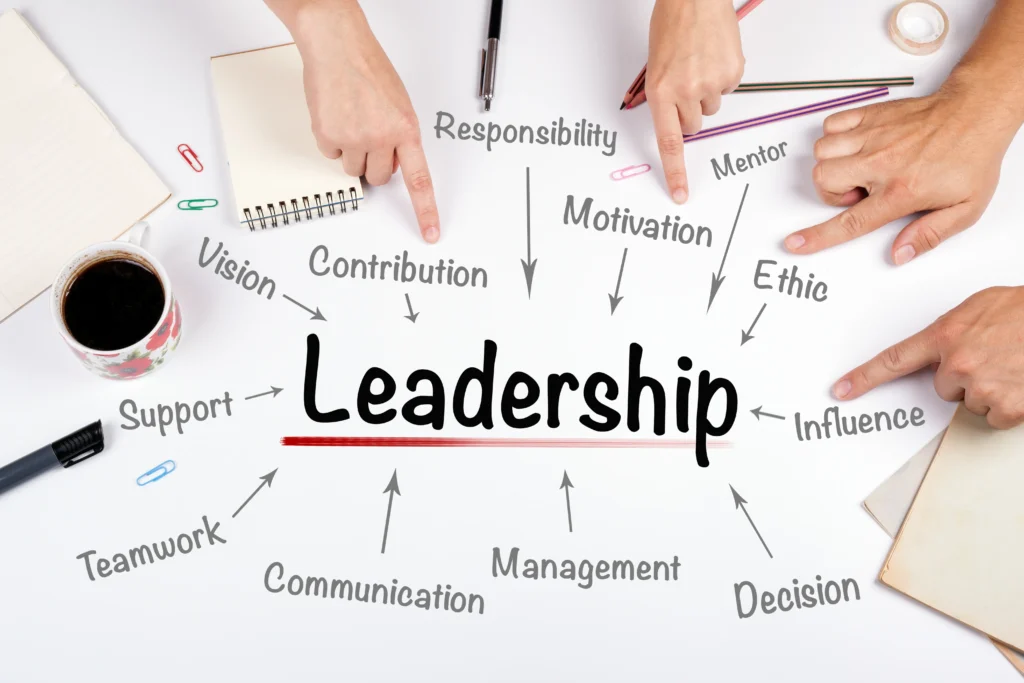
In the world of project management, professionals are often expected to wear multiple hats, and two of the most critical roles they balance are leadership and management. Understanding the distinction between these roles is key to passing the PMP exam and succeeding on the job.
While management focuses on structure, timelines, and control, leadership is about vision, influence, and people. Both are essential, yet serve very different purposes. Many PMP exam questions specifically test your ability to apply leadership principles in real-world scenarios where managing resources alone isn’t enough.
In PMP preparation and application, distinguishing between leadership and management isn’t just theory; it’s a practical necessity. The PMP exam evaluates candidates not only on their ability to manage scope and budget but also to lead with clarity, empathy, and vision. PMI’s Talent Triangle explicitly includes leadership as one of its three pillars, and the modern PMP is expected to navigate both roles with confidence.
This article dives deep into what leadership and management are, how the two differ in a project setting, and how PMP candidates can leverage both to drive results. All insights are aligned with Education Edge’s practical approach to PMP training and project delivery excellence.
What is Leadership and Management?

Leadership is the ability to set a vision, influence others, and inspire action toward a common goal. Leaders focus on long-term impact, change management, and building alignment among stakeholders. They cultivate trust and foster team morale.
Management refers to the process of planning, organizing, executing, and monitoring work. Managers prioritize efficiency, deliverables, and process control. They ensure projects stay on track by managing resources, time, and risk.
In project environments:
- Project leaders articulate a vision, build trust, and align the team with the organization’s strategic goals.
- Project managers ensure project plans are executed efficiently, timelines are met, and resources are optimized.
Understanding both roles helps build balanced skillsets, especially essential when preparing for the PMP exam or applying PMI’s Talent Triangle: Technical Project Management, Leadership, and Strategic & Business Management.
Project Leadership vs Project Management: A Side-by-Side Look
| Category | Project Leadership | Project Management |
| Focus | Vision, innovation, change | Goals, deliverables, execution |
| Time Orientation | Future-focused, long-term impact | Present-focused, milestone delivery |
| People Orientation | Empowers, mentors, motivates | Coordinates, supervises, allocates |
| Decision-Making | Based on vision and purpose | Based on data, scope, and schedule |
| Success Metric | Team cohesion, innovation, stakeholder trust | Timely and on-budget delivery |
| Authority | Influence-driven | Role-driven (assigned) |
Knowing how to shift between project management vs project leadership allows PMPs to become adaptive professionals who can guide both people and processes effectively.
Why the Difference Between a Boss and a Leader Matters

Many project managers fall into the trap of being “bosses”. issuing instructions and tracking compliance. But true leadership transcends authority.
A boss:
- Focuses on output and compliance
- Tends to be reactive
- Uses control and task delegation
A leader:
- Inspires purpose and ownership
- Is proactive and strategic
- Builds autonomy and trust
The difference between a boss and a leader in project management can be the difference between a disengaged team and a high-performing one. Leadership encourages creativity and accountability, two factors that boost long-term project success.
Leadership in the PMP Framework
The PMBOK® Guide emphasizes leadership as a core skill in the modern project landscape. Leadership shows up in:
- Stakeholder Engagement: Building alignment, trust, and long-term buy-in.
- Team Performance: Encouraging self-organization and emotional intelligence.
- Communication: Influencing stakeholders through storytelling and transparency.
Project leadership is less about checklists and more about adaptability, vision, and empathy—all qualities emphasized in PMP scenarios and behavior-driven questions.
Management in the PMP Framework
While leadership guides vision, management anchors execution. In PMP domains such as Planning, Executing, and Monitoring & Controlling, management competencies are critical. This includes:
- Scope and Schedule Management: Defining deliverables, timelines, and baselines.
- Risk Management: Anticipating and mitigating issues through control measures.
- Quality Assurance: Ensuring outputs align with stakeholder expectations.
At Education Edge, our PMP certification prep equips candidates with templates, formulas, and processes needed for top-down project control.
The Hybrid Role of the Modern PMP
In today’s agile and hybrid project environments, PMPs are expected to wear both hats. Here’s how you can bring together project management vs project leadership effectively:
1. Start with Vision, Then Structure
Before diving into the Work Breakdown Structure (WBS), ask: What is the purpose of this project? Let your leadership mindset guide clarity before letting management take over execution.
2. Influence Without Authority
Many PMs operate in matrix environments where they don’t directly manage the team. Leadership lets you earn influence through collaboration, not command.
3. Switch Between Coaching and Directing
Management may require assigning tasks, but leadership involves growing your team’s capability to self-manage over time. Be a mentor as much as a planner.
4. Use Emotional Intelligence (EQ) in Decision-Making
While management is data-driven, leadership adds a layer of empathy and intuition. EQ helps you navigate team morale, stakeholder resistance, and high-stress scenarios.
5. Communicate with Clarity AND Charisma
Managers report progress; leaders tell stories. When combined, you can keep your stakeholders informed and inspired.
Real-World Example: Project Leadership vs Project Management
Imagine you’re leading a digital transformation project.
As a manager, you:
- Develop the timeline and budget
- Assign tasks to your Scrum teams
- Track sprint velocity and burn rates
As a leader, you:
- Explain the ‘why’ behind the transformation
- Engage stakeholders with a compelling vision
- Create psychological safety for teams to innovate
When both skillsets are present, projects are more likely to meet technical goals and drive cultural adoption.
Developing Leadership and Management Skills with Education Edge
Education Edge provides aspiring PMPs and working professionals with the tools, mentorship, and exam strategies to build both leadership and management capabilities. Our courses go beyond exam prep:
- Business analysis and strategic thinking (for future leaders)
- Process tools, templates, and simulations (for expert managers)
- Agile and hybrid techniques (to master modern project delivery)
Whether you’re preparing for your PMP exam or aiming to grow into a senior PM role, we help you build a well-rounded project skillset.
How Are Leadership and Management Different? Key Takeaways
Leadership focuses on vision, people, and driving change by influencing others to work toward a shared goal. It emphasizes inspiration, adaptability, and long-term thinking. Management, on the other hand, deals with organizing resources, executing plans, and maintaining control over tasks and timelines. It ensures projects are delivered on time, within budget, and to the required quality.
A great project manager must possess both. Being able to motivate and lead people while effectively executing structured plans is what separates successful PMPs from the rest. By learning how leadership and management are different and how to master both, you will:
- Improve your performance in PMP situational exam questions that test emotional intelligence and conflict resolution.
- Confidently lead your team through complex change and unpredictable project environments.
- Demonstrate well-rounded capabilities in job interviews and earn faster promotions in project roles.
Conclusion
Mastering both leadership and management is what sets a standout project manager apart from the rest. While leadership drives innovation, vision, and team cohesion, management delivers structure, accountability, and results. These aren’t competing skillsets; they’re complementary tools that enable you to execute strategy while empowering people. PMP-certified professionals must navigate both domains seamlessly, especially as modern projects demand greater emotional intelligence, adaptability, and influence.
At Education Edge, we believe that excelling in one without the other leaves a gap in your potential. That’s why our PMP certification program is designed not only to help you understand the PMBOK framework but also to prepare you for real-world scenarios where leadership and management converge. Our training equips you to lead change, manage complexity, and deliver value in today’s dynamic environments.
If you’re serious about advancing your career in project management, now is the time to build both muscle groups. Explore the PMP Certification Program at Education Edge and become the professional who doesn’t just deliver projects—but inspires people while doing it.
FAQs
Why is understanding leadership vs. management important in PMP?
Because PMP-certified professionals are expected to guide both strategy and execution. The PMP exam tests situational judgment, stakeholder engagement, and people management, which are rooted in leadership, alongside planning, scheduling, and risk control, which require management. Knowing the difference ensures you’re prepared for both the exam and real-world delivery.
Can a project manager be both a leader and a manager?
Yes, and they should be. Successful project managers balance vision with structure. They inspire teams to align with the project’s goals (leadership) while keeping timelines, budgets, and scope on track (management). The most effective PMPs apply both roles fluidly, depending on the project phase and team dynamics.
What are examples of leadership skills in PMP?
Leadership skills relevant to PMP include stakeholder influence, team motivation, emotional intelligence, conflict resolution, vision-setting, and adaptability. These appear in exam questions related to team performance, communication, and agile facilitation.
What is the key concept of leadership and management?
Leadership focuses on people and change, guiding vision, empowering teams, and adapting to complexity. Management ensures order, organizing resources, executing plans, and delivering results. Both are essential in project environments.
Can you pass the PMP exam without strong leadership skills?
It’s unlikely. The PMP exam includes scenario-based questions that test leadership competencies like conflict resolution, team engagement, and stakeholder influence. Strong leadership skills are critical to understanding behavioral domains and passing the exam successfully.







